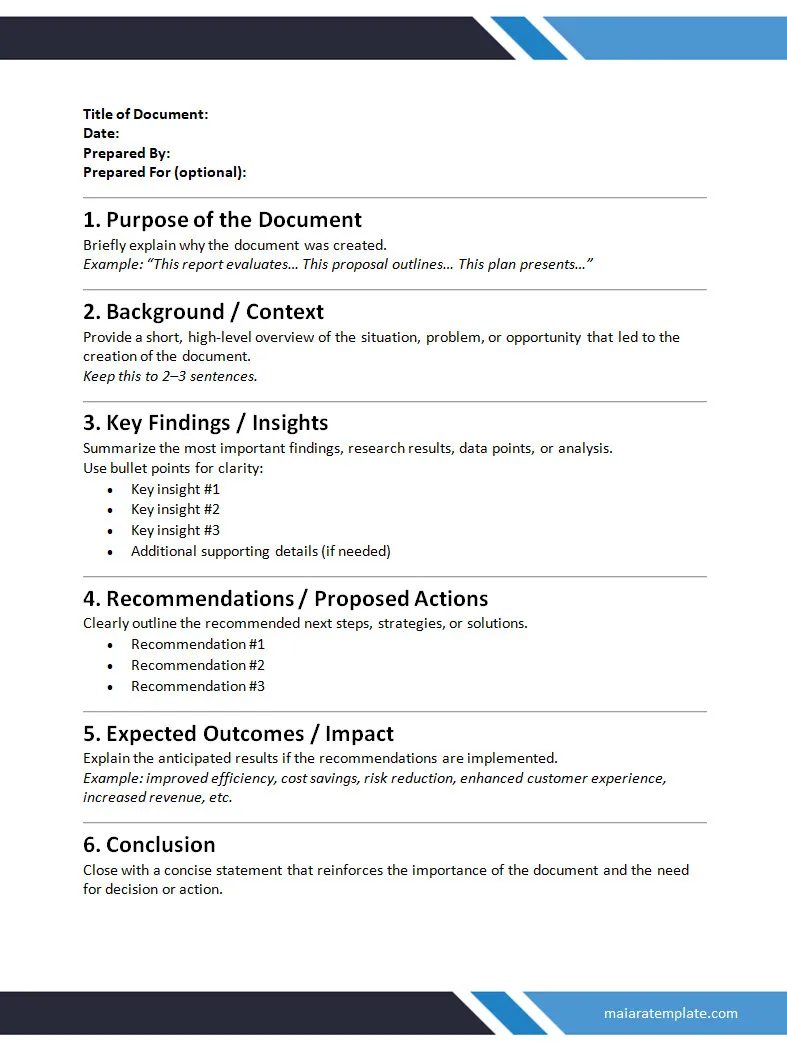An executive summary is a powerful tool that can make or break a document’s impact. It serves as the gateway to the full content, providing a snapshot of the main points, findings, and recommendations in a concise format.

To create an executive summary that truly captures the essence of the document and engages the reader, it is essential to understand its purpose, key components, and best practices in writing one.
What is an Executive Summary?
An executive summary is not merely a summary of a document; it is a strategic communication tool designed to convey the most important information clearly and compellingly. It acts as a teaser, enticing the reader to delve deeper into the full document by presenting the key points in a concise format.
Think of it as the trailer for a movie – it should give the audience a taste of what’s to come without revealing all the details.
The primary goal of an executive summary is to provide busy readers, such as executives and decision-makers, with a quick overview of the main points, findings, and recommendations of a longer document. It serves as a shortcut for those who may not have the time or inclination to read through the entire document but still need to grasp the essential information. By presenting the key insights upfront, an executive summary helps the reader make informed decisions or take action based on the summarized content.
Key Components of an Executive Summary
When crafting an executive summary, there are several key components that should be included to ensure its effectiveness. These components typically include:
- Objective: Clearly state the purpose of the document and what the reader can expect to learn from it.
- Main Findings: Summarize the key findings and results presented in the full document.
- Recommendations: Provide any recommendations or actions that should be taken based on the findings.
- Key Data/Statistics: Include any important data or statistics that support the main points of the document.
- Conclusion: Wrap up the summary with a brief conclusion that reinforces the main points.
Best Practices in Writing an Executive Summary
To ensure that your executive summary is as effective as possible, consider the following best practices:
- Start with a Strong Hook: Begin the summary with a compelling opening that grabs the reader’s attention and sets the tone for the rest of the document.
- Focus on the Main Points: Keep the summary focused on the main points, avoiding unnecessary details or tangents that may distract from the key messages.
- Use Visuals Wisely: Incorporate visuals, such as charts or graphs, to help illustrate key data or trends and make the information more engaging and accessible.
- Review and Revise: Take the time to review and revise the executive summary to ensure that it is clear, concise, and impactful. Consider seeking feedback from others to improve the quality of the summary.
- Include a Call to Action: End the summary with a clear call to action that prompts the reader to take the next step, whether it be reading the full document, making a decision, or taking a specific action.
Free Executive Summary Template
An Executive Summary helps you present the key points of a report, proposal, or business plan in a clear, concise, and compelling format. It highlights essential information—such as goals, findings, recommendations, and outcomes—so readers can quickly understand the purpose and value of your document. With a well-structured template, you can save time, improve clarity, and ensure your summary communicates the most important details effectively.
Download our Executive Summary Template today to create polished, professional summaries that make a strong impact.
Executive Summary Template – DOWNLOAD
- Free Executive Summary Template (Word) - November 20, 2025
- Free Executive Resume Template (Word) - November 20, 2025
- Free Excuse Letter Template (Word) - November 20, 2025